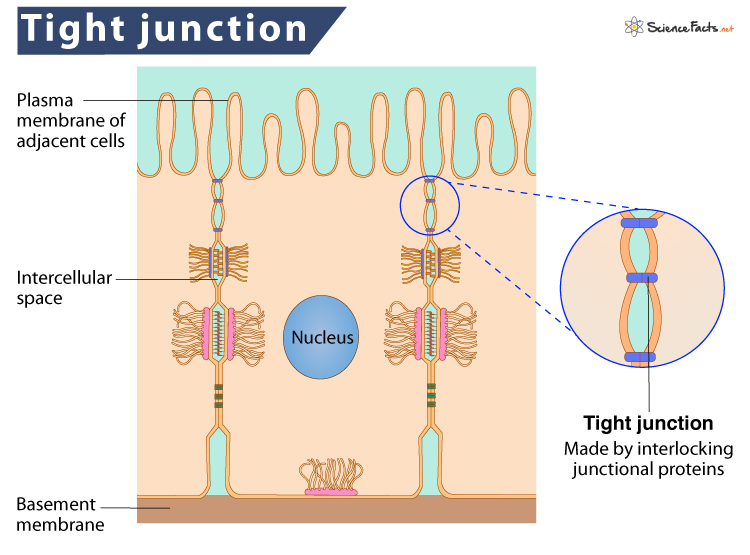Tight Junctions
Tight junctions, alternatively known as occluding junctions, or zonula occludens, are intercellular cell-cell adhesion complexes found between two adjacent epithelial cells. They exclusively occur near the apical regions of these cells, thus forming a permeability barrier between the intra- and extracellular environment.
Epithelial cells line the outer surfaces of organs and blood vessels throughout the body and the inner cavities of various internal organs. So, tight junctions are also present in multiple locations. For example, skin, nephron, liver, bile duct, blood-brain-barrier, etc., to name a few.
Structure and Formation
As stated, tight junctions are present between two adjacent epithelial cells, forming a continuous belt-like connection. These regions of the cells are so tightly connected that it seems like the adjoining plasma membranes are almost sealed.
A few transmembrane proteins (Claudins, Occludins, Junctional adhesion molecules, and Zonula occludens) from each cell membrane form these junctional complexes. They spread from the two adjacent membranes and interlock across the intercellular space. Along with these proteins, specific cytoplasmic adaptor proteins such as cingulin, PAR3, PAR6, and MUPP1 are also necessary for correctly organizing the integral membrane components of the junction.
Though the main structural components of the junctions have been detected, it is still unclear how the formation is regulated.
Upon complete formation and maturation, the junction appears like a series of local seals joined together in a maze-like fashion rather than a continuous seal.
Functions
1. Helping in paracellular ion transport: They act as cell barriers by restricting the passage of water, electrolytes, and other small molecules across the epithelium. However, they also form channels that allow the selective diffusion of ions and solutes between cells, thus helping paracellular ion transport.
This barrier mechanism of tight junctions plays a regulatory role in controlling diseases like jaundice, edema, blood-borne metastasis, and diarrhea.
2. Maintaining cell polarity: They help maintain cell polarity by preventing the lateral diffusion of integral membrane proteins between the apical and basal surfaces.
FAQs
Ans: No, tight junctions are not found in plant cells.
Ans: No, connective tissue does not have tight junctions.
Ans: Yes, tight junctions are present between the alveolar epithelium.
-
References
Article was last reviewed on Friday, February 17, 2023




